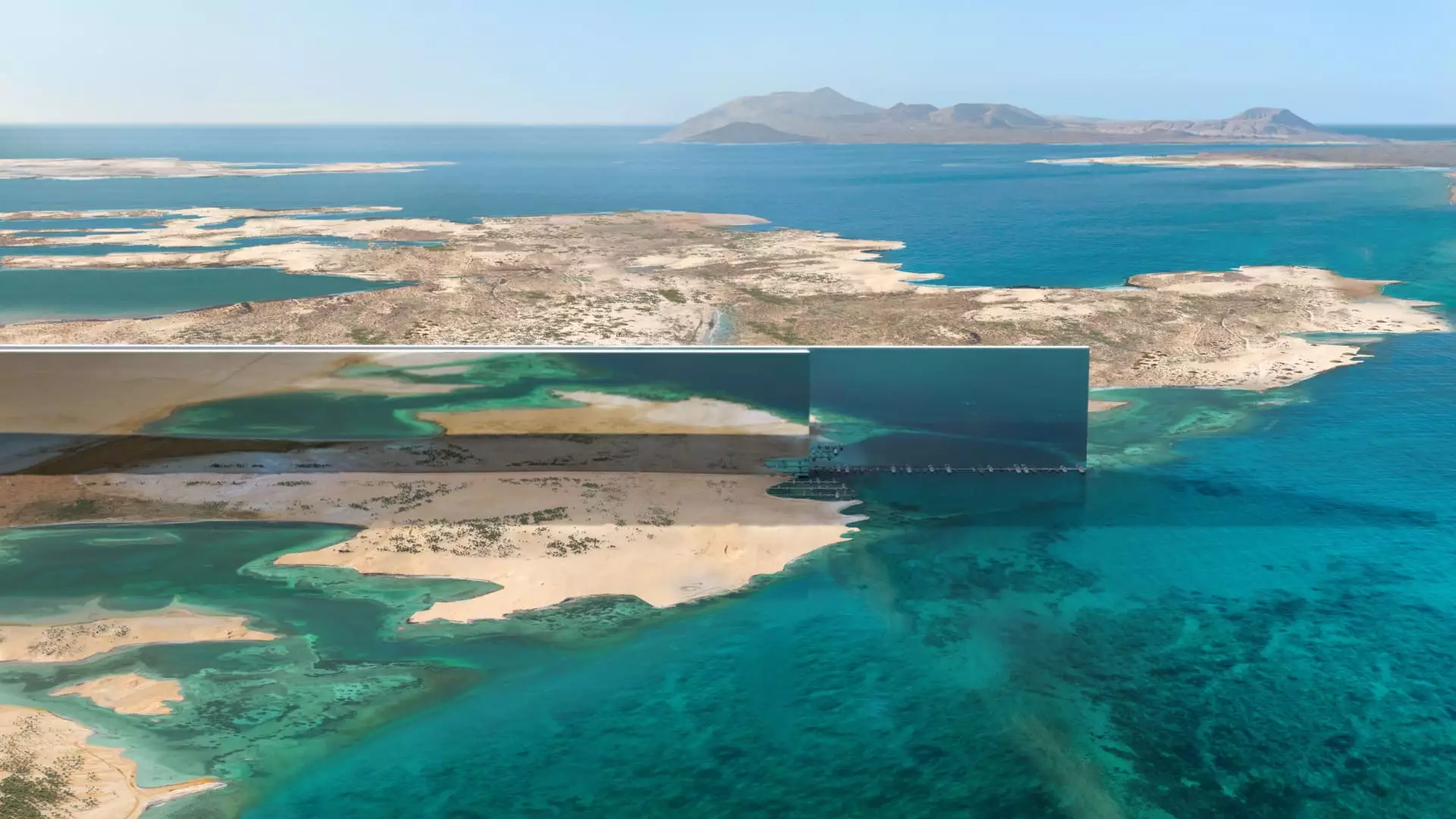The Illusion of Grandeur: Why Saudi Arabia’s Mega-Projects May Fail to Deliver

Saudi Arabia’s latest venture into futuristic urban development reflects an obsession with spectacle rather than sustainable growth. The so-called “Neom Project,” crowned by the audacious flagship “The Line,” epitomizes a lavish gamble that may ultimately serve as a costly distraction from the kingdom’s pressing economic realities. Despite President Mohammed bin Salman’s lofty ambitions, the ongoing reassessment of The Line reveals a deeper truth: these mega-projects are riddled with overconfidence, technological hubris, and unsustainable financial commitments.
The grand vision of The Line promises a city designed to revolutionize urban living by encapsulating luxury, technology, and environmental consciousness within a 105-mile linear city. Yet beneath this veneer of innovation lies a fragile foundation heavily dependent on unproven technology, exorbitant costs, and uncertain demand. Saudi Arabia’s approach assumes that dreams of futuristic living can be seamlessly translated into reality, ignoring the complex economic and social dynamics that influence urban success. This disconnect between aspiration and feasibility casts doubt on whether such initiatives can be more than impressive façades built on shaky foundations.
The peril of chasing illusions over practical realities
The recent strategic review of The Line exposes the vulnerability of these grand endeavors to economic downturns and fluctuating oil prices. As global energy markets experience turbulence, Saudi Arabia’s reliance on oil wealth to fund such ambitious projects appears increasingly tenuous. With oil prices dropping below $70 per barrel—a significant shift from the $100 levels just a year prior—the financial calculus for megaprojects like Neom no longer adds up. To maintain momentum, the kingdom must confront an uncomfortable truth: the real costs and technical challenges may far exceed initial projections.
Critics have long questioned whether the technological infrastructure envisioned for The Line exists or can be realistically developed within the projected timelines and budgets. High-speed rail systems, climate-controlled skyscrapers, and sustainable urban infrastructure remain technological visions rather than practical realities. This discrepancy underscores a dangerous optimism—a tendency among consultants and project planners to inflate expectations in order to secure continued political and financial support. The ethical dilemma emerges: is Saudi Arabia truly committed to delivering a futuristic city, or is it merely indulging in grandiose displays of power to showcase the kingdom’s resilience and innovation?
The consequences of inflated expectations
The presence of a “yes-man” culture among consultants and advisors signals a deeper systemic flaw—overreliance on positive forecasts that may obscure the true risks. The practice of deliberately minimizing challenges and overestimating potential benefits undermines trust and risks creating a “house of cards” that eventually collapses under the weight of reality. As Tarik Solomon rightly notes, developing and managing such unprecedented projects requires honest assessments, transparency, and accountability—qualities that appear to be lacking amid political pressures to showcase progress.
Furthermore, the fallout from these inflated projections isn’t limited to financial miscalculations. It influences public perception and the credibility of Saudi Arabia’s broader reforms under Vision 2030. If these projects fail to materialize as planned, it could erode investor confidence, damage international relations, and diminish the kingdom’s geopolitical stature. Therefore, the reconsideration of The Line, accompanied by cost-cutting measures and job cuts, signifies an acknowledgment of these systemic issues, a move toward pragmatic reassessment rather than blind optimism.
Financial sustainability over visionary fantasies
The shift toward more cautious planning and budget discipline reflects a necessary pivot away from the reckless spending that characterized previous years. As global oil prices decline, Saudi Arabia faces a stark choice: scale back these flamboyant projects or risk serious economic instability. The latter option—continued extravagance—risks deepening fiscal deficits, alienating international partners, and sowing distrust among domestic audiences who expect tangible benefits from such investments.
Smart leadership would recognize that sustainability and gradual development are more viable than chasing utopian visions of a city that may never be completed. Building things slowly, with close attention to real technological capabilities and market demand, is far more prudent than rushing to showcase “the future” at the expense of economic prudence. This cultural shift toward realism could save Saudi Arabia from squandering its finite resources on projects that, despite their dazzling images, might never live up to their promised potential.
The true test—a need for accountability
Ultimately, the fate of Neom and The Line hinges on transparency, ownership, and realistic planning. As the project enters a phase of assessment and possible downsizing, it becomes clear that genuine accountability is needed. Stakeholders, both international and domestic, must demand honesty about what is achievable and what remains fanciful. Only through rigorous evaluation and disciplined execution can Saudi Arabia hope to turn its ambitious visions into sustainable realities, rather than spectacular failures.
The challenge lies in resisting the allure of unbridled ambition and instead embracing pragmatic innovation aligned with economic realities. It’s not enough to boast of futuristic cities; they must be built on solid ground—financially, technologically, and socially. Whether Saudi Arabia’s leadership can shift from illusion to action remains uncertain, but one thing is clear: without humility and genuine accountability, these dazzling dreams risk becoming echoes of hubris that ultimately implode under their own weight.





